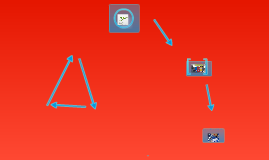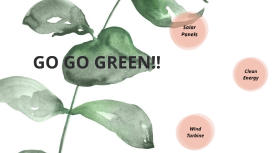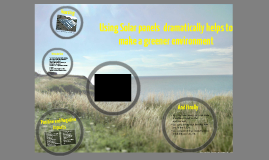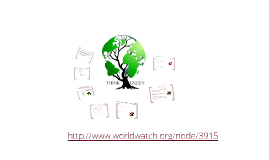Go Green Go
Transcript: More Than Just A Pretty Face Plants And People LET'S EXPLORE Apart from supplying ,indirectly , every living thing with food. Plants employ a cunning trick called photosynthesis. Using sunlight ,water and carbon dioxide they generate sugars to make them grow and breathe out oxygen. More plants equates to less carbon dioxide and so combats global warming .Plants ingest carbon dioxide, CO2 and convert into Oxygen. Since there is an excess of CO2 and an excess of other harmful gasses, it is necessary to have plants on land and in the water. CO2, SO2, and NO are typical air pollutants given off by power plants How Plants Affects The Ecosystem Made by Shehzal People around the world give beautiful flowers as gifts for birthdays and weddings. Not a day goes by in which our lives are not affected by flowering plants. Nearly all of our food comes from flowering plants. Useful products such as rope and burlap are also made from the fibers of flowering plants. A large number of widely used drugs, including medicines such as aspirin, come from flowering plants. Many commercial dyes are extracted from flowering plants. How Plants Transport Food Environmental Recycle It is impossible to think about an environment without plants. Even environments like the hot desert or freezing polar regions have plants. These plants have adaptations that help them survive the harsh conditions. Plants create the base for most environments. All of the different types of plants in an environment are commonly referred to by scientists as “plant communities.”Over the past few decades, people have begun to think more about the important relationship plants have to people, animals, and the overall health of the environment. Here are a few of the important ways plants help the environment. Trees and other plants hold the soil in place so that wind and rain don’t create severe erosion.Fallen leaves and rotting wood help enrich the soil other plants need to grow.Shade from trees and large bushes keeps us cool. Shade also provides places for wildlife to live and hide. Trees create homes. A large old tree 40 m tall may be the home for over 1,000 species! Plants And The Environment People are able to live all over the Earth because plants make seeds that can be stored and carried to other places. This has helped various species of plant spread to many parts of the world. Think of wheat, rice, corn, and beans. These plants are grown all over the world. Without these important foods, people’s lives would be very different. The seeds of these plants are good to eat, full of nutrients, and can be made into many different foods. The Source of Many ThingsFor centuries, plants have been one of the most useful natural resources in the world. Here are some examples.Breakfast cereal (rice, corn, wheat, soy)The cardboard box the cereal came in (wood fiber from trees)The chair and table you sat at for breakfast (wood from trees)The books and paper you use at school (wood fiber from trees)The air you are breathing now (oxygen from plants)The clothes you are wearing (cotton, linen, and hemp from plants) GO GREEN GO 1. The Earth's organisms interact with their environment in a delicately balanced cycle. Energy from the sun is used by plants which are in turn used as food by other creatures. The cycle continues as plant and animal life forms die and are consumed by microorganisms 2. industrialization and overpopulation could lead to deforestation, depriving biotic factors of their natural habitat. like acid rain, which causes a decline in the number of plants and animals .3. Most plants and animals live in areas with very specific climate conditions, such as temperature and rainfall patterns, that enable them to thrive. Any change in the climate of an area can affect the plants and animals living there, as well as the makeup of the entire ecosystem Plants are one of two major Kingdoms of life forms. There are about 300,000 plant species on Earth. Plants are the only life forms that can produce their own food using energy from sunlight. Plants produce almost all of the oxygen in the air that humans and other animals breathe. Plants are also an important source of food, building materials, and other resources that make life possible for Earth’s animals.In addition to making food for themselves, plants make food for animals. Animals eat many different plant parts. For example, cows, horses, and antelope eat the leaves of grass. Primates, such as monkeys, eat fruits and leaves. People eat almost all parts of a plant including underground roots and tubers (potatoes, carrots, and radishes). We also eat leaves (lettuce, spinach), fruits (oranges, apples, bananas), and seeds (rice, wheat, and corn). PLANTS How plants Affect Our Environment

















